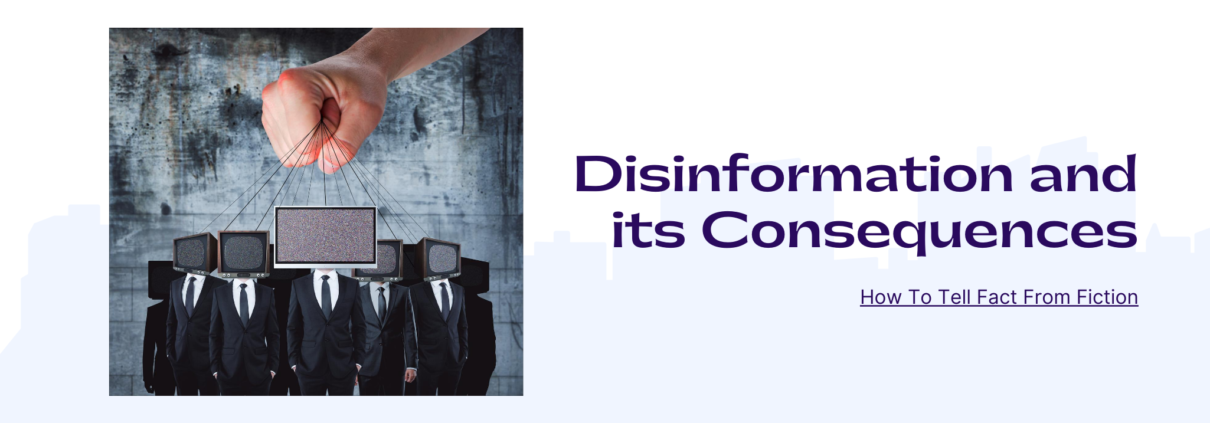Disinformation and Its Consequences
Information and facts are what help us make informed decisions during any crisis, including COVID19, but what happens when the facts are muddled by false information and conspiracy theories?
There are consequences – life or death consequences. A new study by The American Journal of Tropical Medicine and Hygiene found that from January until March an estimated 800 deaths and 5,800 hospitalizations are a direct result of disinformation about COVID-19.
The rumors, disinformation, and conspiracy theories that caused these deaths and injuries include information regarding possible cures, transmission, morality, origin of the virus and many other unfounded “facts”.
One of the rumors discussed in the study was drinking bleach or alcohol to gain immunity from COVID-19. This rumor was perpetuated by the current administration, proving that disinformation isn’t just spreading from private citizens on Facebook, it’s coming from the people who hold positions of authority–further confusing the public. During a press briefing on April 24th at the White House, it was implied that disinfectants could be used internally as a treatment for COVID-19. Although they referred to these comments as “sarcastic” their words carry weight among a significant segment of the population. In the days following, many states saw a spike in poison control calls related to ingesting bleach and other disinfectants.
The internet, and specifically social media, is the prime breeding ground for COVID-19 disinformation. With millions of users and not enough moderator’s, “fake news” spreads like wildfire. From April through June Facebook removed 7 million posts that included fake information related to COVID-19. They also added warning notices to 98 million COVID-19 posts that were deemed “misleading but not harmful enough to remove”.
Even the sitting President isn’t exempt from Facebook’s removal of false information. Facebook recently removed a video posted by the current administration’s campaign where they claimed children are “almost immune” to COVID-19. This false claim comes only a few weeks after 97,000 children tested positive for COVID19 during the last two weeks of July. More recently a study found that asymptomatic children may carry more virus particles in their airways than adults in ICUs.
Unfortunately, simply removing the misleading content won’t do much. A study published in Springer Link shows that redactions are rarely as effective as the initial spread of disinformation. Even scarier, disinformation is spreading faster than reliable information. According to a report by Avaaz “Content from the top 10 websites spreading health misinformation had almost four times as many estimated views on Facebook as equivalent content from the websites of 10 leading health institutions, including the WHO and the CDC.”
And it’s not just dangerous disinformation about COVID-19. False information is dangerous because it can shape national discourse and sway public opinion. David Lazer, author of the paper Combating Fake News: An Agenda for Research and Action says, ”such situations can enable discriminatory and inflammatory ideas to enter public discourse and be treated as fact. Once embedded, such ideas can in turn be used to create scapegoats, to normalize prejudices, to harden us-versus-them mentalities and even, in extreme cases, to catalyze and justify violence.”
It is up to us to use common sense and a healthy dose of skepticism when confronted with propaganda and disinformation. We need to verify the sources of what we accept as facts. We need to ask if we believe something because we want it to be true. We need to diversify our sources and the views they promote. Our tech companies and social media conglomerates need to have a stronger stance on disinformation on their platforms and the bots that help to perpetuate it. We need greater literacy education and funding in our schools so we can teach our kids how to verify the messaging fed to them on the internet and to distinguish fact from fiction. We need to reduce the financial incentives for viral fake news and find a way to directly address it without legitimizing it. It will take a multipronged and coordinated approach both as individuals and from our institutions to combat disinformation but it is vital in order to protect our democracy.
For more information on concrete steps that can be taken to combat disinformation, click here.
Yours in Strength,
The Take Back Control Team




Leave a Reply
Want to join the discussion?Feel free to contribute!